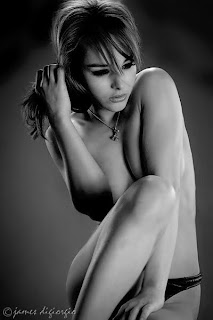 I spend an inordinate amount of time thinking these days: Thinking about where I might take my photography career in these harsh times of shrinking rates and growing competition. It's giving me a headache!
I spend an inordinate amount of time thinking these days: Thinking about where I might take my photography career in these harsh times of shrinking rates and growing competition. It's giving me a headache! I'm not much of a gambler. I've been to Vegas many, many times. Most often, for work related reasons. Sure, I've gambled a bit but not in a big way. Not even close. Gambling, in my mind, has too many inherent risks, not the least of which are the odds: They're way too much in favor of the house. It seems like sucker play. For the vast majority of those who visit Sin City, that's exactly what it is.
Sucker play.
But my thoughts revolve around something far more important than gambling in Vegas. Certainly, far more important to me.
My career.
My livelihood.
My goals and aspirations and where my quest to achieve them might take me. Make that, "How to get there." In fact, you could also make that, "Where to go?"
All this thinking is making me more timid in terms of the risk-taking aspects of how to get there or where to go. I'm not a young man. I ain't saying I'm a decrepit geezer. I'm not. Far from it. (Leastwise, I certainly hope so.) I believe I still have more than a few good and productive years left in me. But, unlike a Sin City high-roller with plenty of eff you money to risk, I don't have all that many years to blow. The choices I might make at this point in my life seem infinitely more important than they were ten or twenty or thirty years ago.
Maybe I'm having a 3/4-life crisis? (Note: My mid-life crisis was a blast! What with being a shooter of beautiful naked chicks and all. Just sayin.)
Anyway, that's what's making me think even harder and feeling a greater sense of timidity, and simultaneous urgency, about the directions I might choose.
BTW, I have no plans to give up shooting what I've mostly been shooting for many years. But these days, it simply doesn't pay the rent. Ergo, new directions, new choices, new ideas are in order.
"The times they are a changin'!" A great American poet sang. Fact is, they've already changed-- Dramatically!
An article in the New York Times the other day, "For Photographers, the Image of a Shrinking Path," illustrates the current plight of those trying to make a living with cameras in their hands. It's apropos for both new photographers and long-time photographers as well.
So what to do? What directions to take? What new photographic genres should I explore or, more to the point, what photography niche would my skill-set be most suited to and, of those niches, which make most sense to pursue? (i.e., from the perspectives of demand, competition, and it being reality-based.)
Wedding, family and event work? Great demand, unbelievably crowded competition, certainly reality-based.
Commercial work? Fair demand, lots of competition, reality-based.
Editorial? Less demand than ever, leastwise for assignment work, plenty of competition (micro-stock, Flickr, etc.) and semi-reality-based.
Fashion and beauty? Marginal demand, plenty of competition, fantasy-based for most who pursue it.
I could name more genres but, truthfully, doing so also gives me a freakin' headache. Besides, what I'm looking for will be a niche under the heading of one of those genres. Such is the nature and place of niches.
Yep. I still keep coming back to this "niche" thing: Finding the right niche and taking a risk (a gamble) pursuing it is the key. Problem is, of course, sticking that key into enough locks to see if it opens the right doors. At my current chronological point in life, I feel I only have so much time to invest, that is, less time to try many locks on many doors... if that makes sense.
As usual, I'm mostly thinking out loud here. Thinking out loud gives me less of a headache than thinking silently. Go figure.
The fenced-in pretty girl at the top is Alexa from a few years ago.








